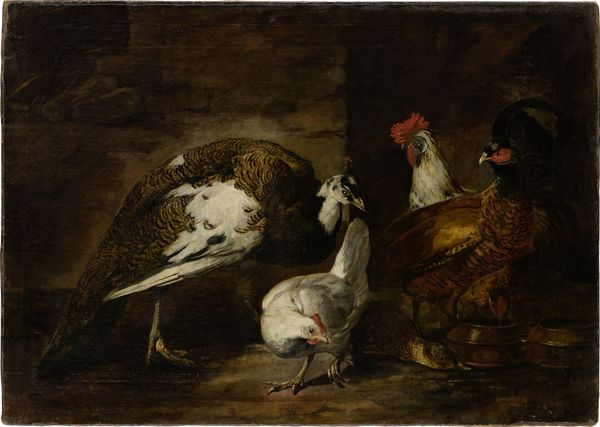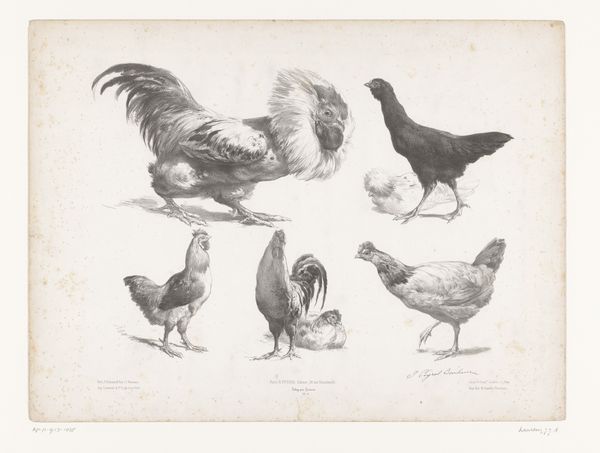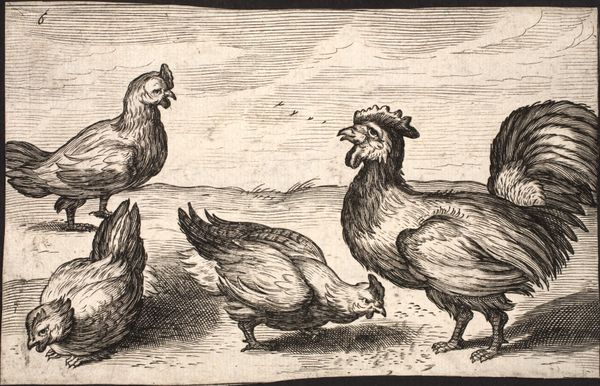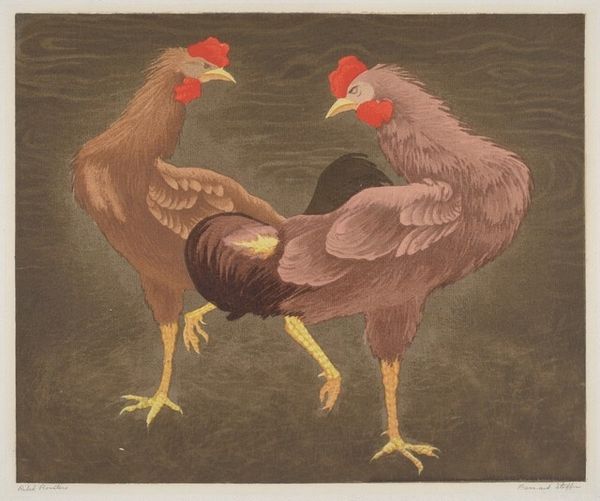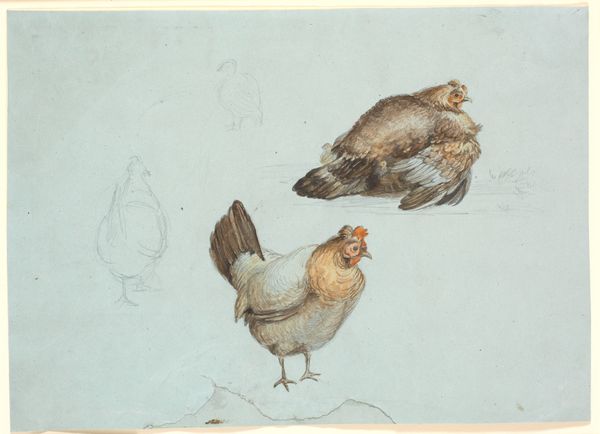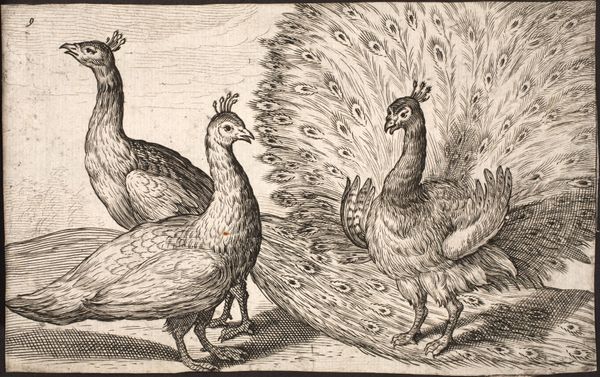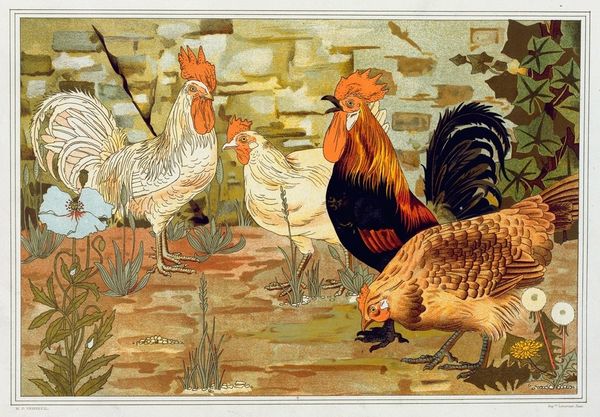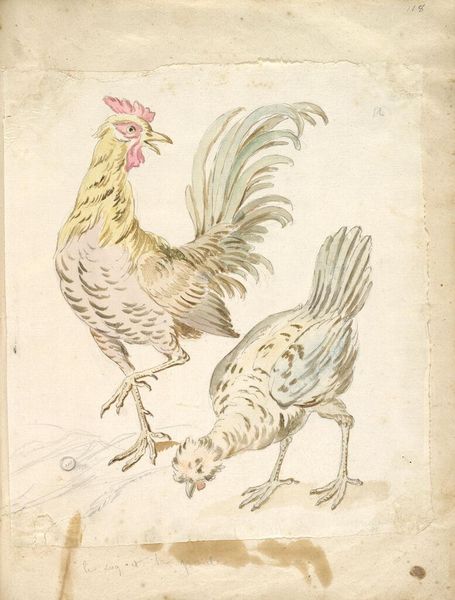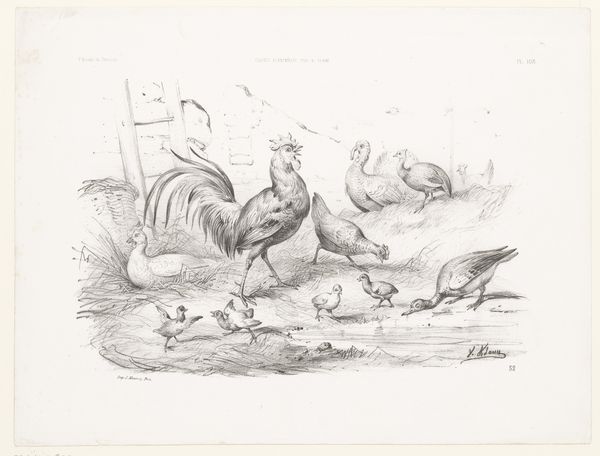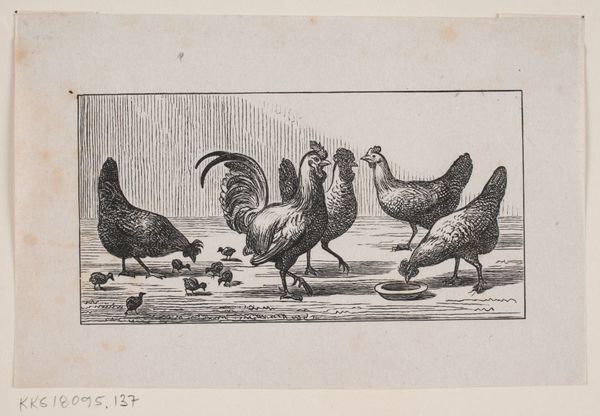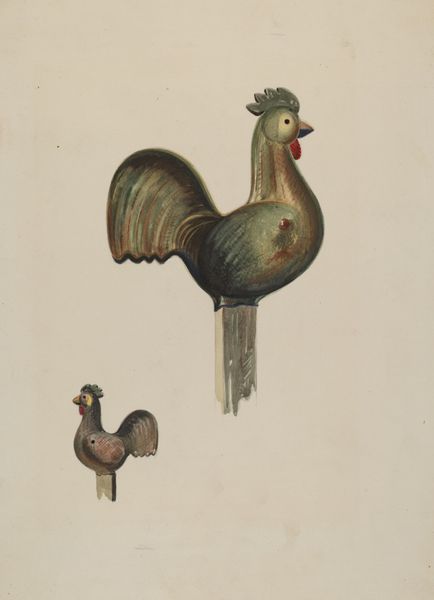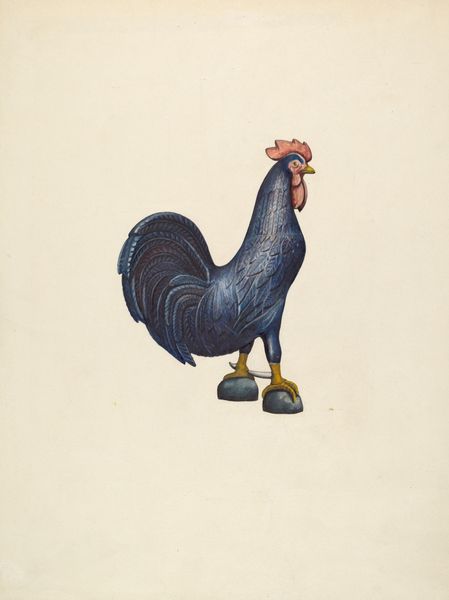
Dimensions: height 61.3 cm, width 80 cm, thickness 2.5 cm, height 69.9 cm, width 88.6 cm, depth 9.8 cm
Copyright: Rijks Museum: Open Domain
Curator: This charming piece before us, residing here at the Rijksmuseum, is entitled "A Rooster with Hens and Chicks," painted by Albertus Verhoesen in 1855. Editor: Oh, isn’t that delightful! It’s utterly idyllic. The hazy background with these beautifully rendered fowl really speaks to the simple life, a gentle tableau. Curator: Indeed! And look at how Verhoesen structures the composition. The rooster stands tall and alert, a visual anchor against the slightly blurred horizon. Notice also how the distribution of the birds guides the eye around the painting. Editor: Mmm, there’s almost a political commentary here. We have the proud patriarch in the rooster overseeing his demure hens and vulnerable chicks, reflective perhaps of societal expectations of the mid-19th century. Was this a commissioned work intended to promote certain family values? Curator: It's certainly tempting to view it through that lens! The romanticism, with its sentimental appeal to the pastoral, permeates Dutch genre painting. However, focusing on the artistic components, the dynamic tension between the detail of the birds and the relative vagueness of the landscape also seems relevant. See how skillfully he uses light. Editor: Speaking of light, it really accentuates the textures, doesn’t it? The artist clearly revels in depicting the varying plumage – from the rooster's glossy sheen to the downy softness of the chicks. Was oil-paint or watercolor predominately utilized to capture these tactile elements? Curator: It seems predominantly done in oils. And in terms of medium, focusing exclusively on those details without their placement risks disconnecting these signifiers from what they actually signify. Look at the spatial composition of foreground and background as they merge! That is significant. Editor: Valid point. And contextually, remember that paintings such as this were acquired not just by individuals, but also displayed publicly, setting trends in how country life was depicted and how societal roles are portrayed. That makes me consider it in relationship to artistic patronage during that period, and in that context its visual language gets richer. Curator: Ultimately, Verhoesen gives us a visually engaging meditation on family, hierarchy, and the beauty of rural life that also shows off his skills with composition and detail. Editor: Exactly. And seeing it here, within the collection of the Rijksmuseum, reminds us how cultural institutions participate in constructing and cementing what we deem to be worthy of artistic admiration and why that is.
Comments
No comments
Be the first to comment and join the conversation on the ultimate creative platform.

